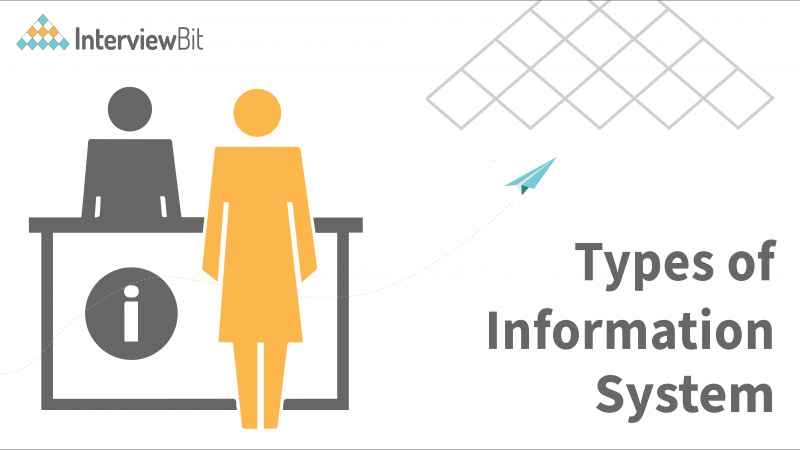Imagine the plethora of information around your business, most of which falls under the broad categories of information technology, people, and business processes. To deal with this information aptly, businesses and organisations require a system capable of stocking, indexing and processing data. In the field of computing, this system is called an information system.
Businesses and organisations require several types of information systems for establishing internal communication channels as well as handling customers and suppliers. These information systems also help manage the overall working of an organisation by aiding business operations and in devising marketing strategies.
Furthermore, there are different types of management information systems, and subsets of information systems that businesses employ to achieve seamless decision-making, information visualisation, internal coordination and detailed analysis of business data. Formulating social media strategies and planning employee benefits are also a few critical areas that management information systems facilitate.
Confused about your next job?
Citing the above statements, it is a no-brainer that information systems are one of the inseparable components of any sprawling institution.
In this article, we will take a look at the various types of information systems and gather some insights into their technicalities and purpose. But first, let us dive deeper into the definition of an information system.
Breaking Down Information System
Information systems, as the name suggests, are systems comprising of a number of components that work in conjugation to process information. The information to be processed can arise from within the organisation or external elements that it deals with. For example, a business can employ an information system to record, arrange and calculate the business expenses it incurred in the past six months. The business can then use these results to alter its buying habits thereby minimising extra expenses.
An information system is fundamentally the real-world implementation of the principles of information technology. Hence, many might consider it to be limited to only computer systems. However, the primary components of an information system broadly include not just computing hardware, software, and networking but also a business’s human resources.
The 6 Types of Information Systems: Simplify Your Business Data handling and Decision Making
There are primarily 6 types of information systems that businesses incorporate in their operations in varying capacities.
1. Transaction Processing System
A transaction process system (TPS) is used to collect, modify and retrieve business transactions on demand.
Any running business conducts several transactions at any given point in time. These business transactions do not conform to just buying and selling of products but also include deposits in banks, inventory counts, payment data about the newly employed, etc. A transaction processing system handles these transactions.
Another purpose of a transaction processing system is that it can be employed to update a business’s transaction records. It can then conveniently store the whole collection of records to produce business reports.
Transaction processing systems also find uses as payroll systems, stock control systems, and billing systems.
Using a Transaction processing system, a business can safely meet all its contractual requirements. It can also store customer information in a secure location and provide access to it as and when required to the concerned authority.
One of the primary benefits of using a transaction processing system is its ability to maintain a stable database from which data can be retrieved easily.
Moreover, the TPS can process volumes of data in realtime. The system does this in batches to better manage the processing time. Therefore, it can be derived that TPS is also responsible for providing premium customer experience and satisfaction.
Using an efficient TPS allows a business to build cordial and reliable relationships with other businesses and customers because of its availability around the world, regardless of the location and language.
2. Management Information System
A Management Information System (MIS) studies the people, technology, organization, and the relationships between them.
Management Information Systems can provide the most suitable information that can be used by an institution’s management to deduce investment strategies. These systems emphasize service through technology and therefore, data analysis, project management is at their very core.
The various types of management information systems can produce reports for specific
business needs. Some examples of these reports include summary reports, ad-hoc reports, execution reports, etc.
Management information systems can also be designed specifically for the Human Resources, Sales or any other suitable department of a business.
The management information system, due to its ability to deliver factual reports with ease and speed makes a business competent enough to confidently handle sudden market changes.
Another benefit of this type of information system is that it allows the business player
including the staff and managers to analyze the reports on their end. Post-analysing,
businesses can set their short long-term goals and prioritize them accordingly.
Management information systems can also help businesses beat the competition by levelling up their ability to match competitive challenges in the market. Analyzing huge amounts of data helps in devising plans to beat the competition and capture the market.
3. Decision Support Systems
A Decision Support System is an interactive information system that assists a business in making decisions for the management. It does this by storing and analyzing the business data to help the business take the appropriate action.
Decision support systems are interactive which means they readily offer information and tools for the manipulation of data. An example of such a system would be the interactive maps we use on our smartphones while travelling. These maps show us which routes are the fastest to traverse along with the appropriate mode of transportation for the journey.
DSS helps in visualizing the data and makes it’s understanding faster and easier. This ultimately bolsters the management’s ability to make effective decisions at a much faster pace.
Due to the interactive nature of DSS, management can add/delete data and observe the effect corresponding to it.
This way decision-making is simplified and a company can meet its target sans any hassle.
4. Expert System
This information system is a sophisticated computer-based system that helps in representing knowledge in the form of data mainly executed by computer programs. Expert systems, keeping in line with their name, are designed such that they mimic human intelligence, particularly reasoning to an extent.
As such, an expert system offers the necessary expertise that is utilized by the management to identify, predict or capture the problems.
Furthermore, this type of information system can be used to assist problem-solving since it incorporates the working of artificial intelligence. To better understand the concept behind an expert system, think of it as an expert in specific business areas who is acting as a consultant.
The core components of an Expert System are its knowledge repository, a search apparatus, an information-gathering system and a display interface that allows users to interact with its outputs. The inbuilt software that administers the system makes deductions by acquiring information from the knowledge repository and answering the queries posed by users through the interface.
Another benefit of the Expert System is that human knowledge is completely captured in a computer and it is used to solve problems.
This makes the Expert System accessible to amateurs and staff lacking expertise to groom their problem-solving skills.
5. Office Automation System
Office Automation Systems offer a way for data to move from one system to another without any manual work or human intervention.
In the digital age, office automation systems facilitate data transportation by bundling huge amounts of data in an ordered manner and shipping them. The lack of manual efforts makes OAS a technique that mitigates errors, speeds up business processes and ensures their reliability.
The OAS also makes certain that every process activity is visible to the management. Thanks to this, businesses can actively figure out and eliminate any bottlenecks associated with a business process.
The automation in OAS makes it possible to look at the data processing path. Using this, businesses can stay updated with tasks and predict future data processing.
OAS can be utilized daily in printing documents, automating emails, and enhancing communication within an organization.
6. Knowledge Management Systems
A knowledge management system is a type of information system that stores information for building knowledge for users. This can help in achieving collaboration between different departments.
Companies make use of Knowledge Management Systems to properly organize the documentation, FAQs, and other such information concerning them. The KMS also makes all the documented company information easily accessible to its staff and customers, albeit in specified degrees.
Documents such as business policies, training material, and generic customer queries can be assembled in one place and accessed at all times.
A KMS ensures that the business-specific abilities of the staff are integrated throughout the organization and helps employees to understand the available information better.
All the collected information from outside, such as the competitor’s market share or services, the organization can be stored as well. This information can then be communicated within the business and be used to design goals accordingly.
Conclusion
The different types of Information systems mentioned above might seem overlapping, but in their true essence, each handles a unique aspect of a business. If used to their utmost extent, these systems can render business communication easier and departmental coordination can be enhanced.
A growing business opens doors to a lot of information and one must ensure that it is effectively processed to make key advancements. Thus, knowing which information systems to install is crucial for businesses and organisations alike.







 Join WhatsApp Group
Join WhatsApp Group


